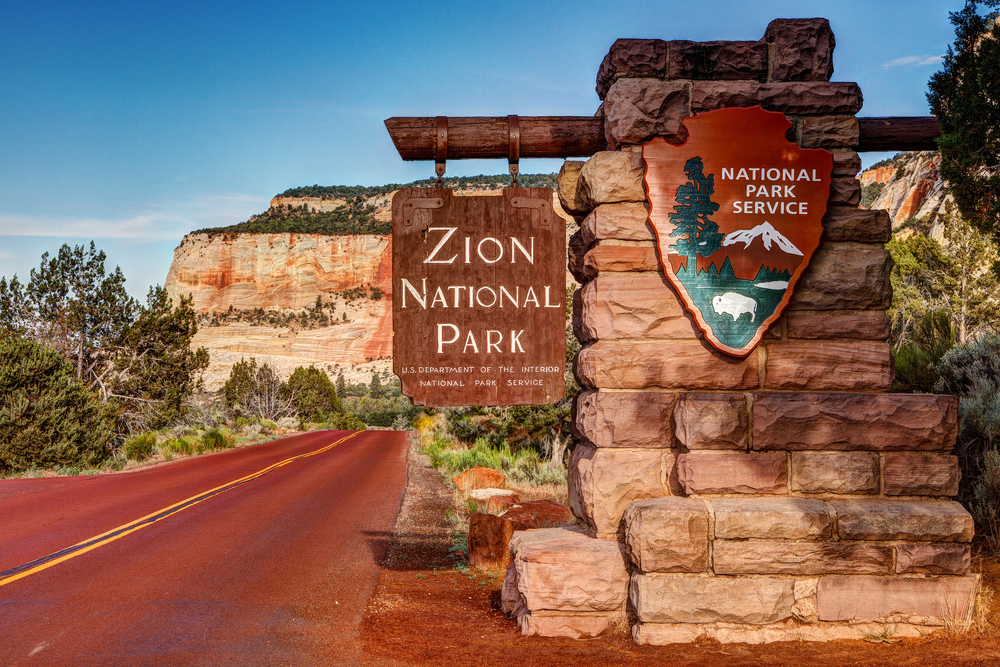As heavy snows have closed parts of Yosemite National Park in California, it’s a good reminder that when visiting one of the 63 national parks in the U.S., always have a backup plan.
The national parks are a wonder to behold. They help preserve pristine natural areas and the organisms that live there. However, they are also subject to extreme and unpredictable weather and are home to wildlife you won’t often encounter anywhere else, which can hinder your visit. The best way to have a fun and safe trip at any of these natural beauties is to come prepared.
The National Park Service (NPS) has several resources available to help you prepare for your time at the park. They include what to bring and what to do if you get lost or go missing.
Cynthia Hernandez, a National Park Service spokesperson, and Joelle Baird, a Public Affairs Specialist at Grand Canyon National Park, offer advice on how to stay safe and come prepared to the national parks.
Staying Safe While Visiting National Parks
National parks are great for outdoor recreation like hiking, biking, climbing and water sports. They are even great for winter activities like skiing and snowshoeing.
Read More: 5 of the Best Winter Activities to Do in National Parks
According to Hernandez, “national parks are generally safe places” — especially for those who plan ahead. So if you plan on recreating, ensure you’re prepared for whatever activity you consider.
Along with the national park website, the NPS App has plenty of safety information for each park. You can easily find any major news, such as park closures, precautions and events. It’s free to download and even has a list of all the parks so you can check off the ones you’ve been to.
(Credit:Tada Images/Shutterstock)
Always check the weather before your park visit, since it can be unpredictable. According to Hernandez, you can even call the park to double-check the weather and see if there are any extra essentials to bring.
Some parks have significant elevation changes. For example, when visiting Rocky Mountain National Park, the temperature from Estes Park — the town at the entrance — can vastly differ from inside the park itself. It may be warm and sunny at the base of the mountain but snowy part way up.
According to Baird, the weather is one factor that can delay Search and Rescue (SAR) from getting to someone if they are lost or hurt while in the parks. If there is inclement weather, have a backup plan to help keep yourself safe.
(Credit:Rachael Martin/Shutterstock)
Throughout the parks, there are informational signs that provide facts about the parks, as well as safety precautions. At each entrance station, park staff also hand out a map and important information you should know about the park. Taking a few moments to read over these materials will help prepare you even more for your adventure.
Dehydration occurs when the body loses more fluids than it takes in. This can happen during physical activity in hot weather, such as hiking or biking. According to Hernandez, you should bring more water than you think you need when visiting the parks. If you’re out in warmer temperatures, it can take 30 minutes to a few hours to feel the effects of dehydration.
(Credit: Tim Malek/Shutterstock)
The national parks are home to thousands of unique species you may not otherwise see. From tiny American pikas to towering moose, all park wildlife deserves respect.
Feeding wildlife, from antelope squirrels to bears, can cause that animal great harm. When animals start eating human food, their behavior can change. A bear, for example, could begin approaching humans for food. They can quickly become unpredictable and could possibly cause harm. Often, bears will be euthanized to prevent a threat to the public. To avoid this, you can remember that “a fed bear is a dead bear.”
Read More: What You Should Do If You Encounter A Bear
While it might be tempting, you should also be cautious when approaching wildlife. The parks are home to some large animals, including moose, bison and bighorn sheep. They may not seem dangerous, like bears and cougars, but these animals can become aggressive if they feel threatened and are large enough to cause serious injuries.
If you want to get close-up photos of wildlife, it’s a good idea to invest in high-quality camera equipment and photograph these animals from a safe distance, or the safety of your vehicle.
(Credit: melissamn/Shutterstock)
Weather in the parks can be unpredictable and sometimes change due to elevation. Having the correct type of clothing while exploring the parks can help you feel more comfortable and safe. It’s always wise to bring extra pants, shorts, socks and a jacket, just in case. Don’t forget to wear proper footwear if you’re thinking of hiking in rocky terrain. Decent hiking boots can help protect your feet and provide ankle support.
-
Tell Someone Where You Are
If you’re heading to the parks, let people who aren’t traveling with you know your travel plans and when they can expect to hear from you. That way, they can alert authorities immediately if you get lost.
Along with these tips, Hernandez also recommends that all park visitors check out the list of 10 essentials.
Park Safety: An Ounce of Prevention
The NPS compiled a list of the 10 essentials to bring along no matter what park you visit. The list includes:
-
Navigation: Something other than your phone.
-
Sun Protection
-
Insulation: Bring multiple layers of clothes.
-
Illumination: Again, something other than your phone (flashlight or headlamp).
-
First-Aid Kit
-
Fire: Carrying matches or a firestarter can help provide a source of warmth and signal for rescue. However, use cautiously; fires can quickly get out of hand in some parks and start a forest fire.
-
Repair Kit and Tools
-
Nutrition: It’s wise to pack more food than you think you may need — without wasting it. Non-perishable items like trail mixes and granola bars are great examples. Just remember to keep all food in a bear-safe container and follow leave-no-trace practices.
-
Hydration: More water than you’ll think you’ll need.
-
Emergency Shelter: A tent, a bivy sack or a space blanket will do.
(Credit:Milan Ivosevic/Shutterstock)
If You Get Lost
Even if you come prepared, there may be times when you need help in the parks. Maybe you’ve twisted an ankle or have gotten lost. If so, Hernandez and Baird offered tips to help SAR locate you faster.
Baird suggests wearing bright colors, like oranges and yellows, to help the SAR team spot you easier. This includes using a bright-colored backpack, too.
(Credit:Aleksey Matrenin/Shutterstock)
A whistle can help SAR hear you easier, and you’ll also conserve energy from not having to yell.
Unless there is an immediate threat to life, Baird recommends staying in one place. However, if staying put isn’t a valid option, moving to a safer place with shade or out of harm’s way is advised. Wandering too far can delay SAR from finding you and wear you out.
(Credit:astarot/Shutterstock)
Enjoy Your Trip!
Check the NPS website for more information, including recreating responsibly and leave-no-trace practices. The NPS is also working on a project for 2023 called, “Your Park Story.” After you’ve enjoyed your national park adventure, share with everyone the highlight of your trip and what the parks mean to you.
(Credit:IrinaK/Shutterstock)
“Our parks are from everyone,” Hernandez says. “There are so many wonderful, beautiful experiences folks can have. As a national park service, we’re here to help you plan for the safest trip.”
Read More: Why You Should Visit National Parks After Dark














